Growing garlic is a rewarding experience, offering fresh flavor and numerous health benefits. It’s easy to cultivate, requiring minimal space and care. Learn how to plant garlic successfully and enjoy a bountiful harvest with expert tips and essential guidelines.
1.1 Benefits of Growing Garlic
Growing garlic offers numerous benefits, including fresh flavor, health advantages, and natural pest repellent properties. It enhances meals, boosts immunity, and deters garden pests. Garlic is easy to grow, requiring minimal space and care, making it ideal for home gardens. Additionally, it encourages soil health and can be stored for long periods. Whether for personal use or sharing, growing garlic provides a rewarding and sustainable harvest, connecting you with nature and nutritious living.
1.2 Importance of Proper Planting Techniques
Proper planting techniques are crucial for maximizing garlic yields and ensuring healthy growth. Improper methods can lead to smaller bulbs, uneven growth, or poor plant development. Key factors include optimal spacing, correct planting depth, and soil preparation. Adequate sunlight and well-drained soil also play vital roles. By following proven techniques, gardeners can enhance bulb size, prevent disease, and achieve a successful harvest. Attention to detail ensures a thriving garlic crop and long-term gardening success.
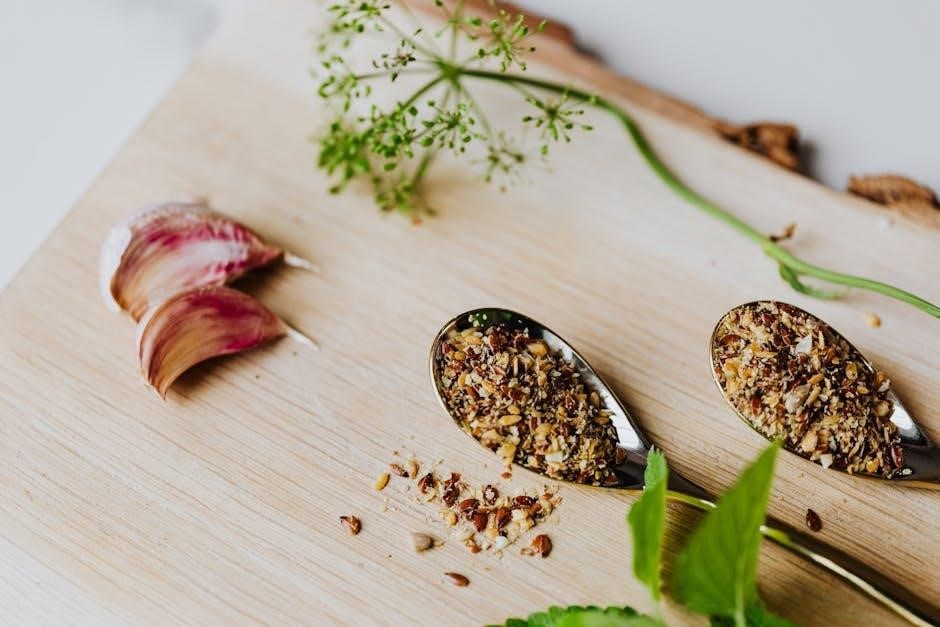
Choosing the Right Variety of Garlic
Selecting the right garlic variety ensures optimal growth and flavor. Consider climate, desired bulb size, and disease resistance when choosing between hardneck, softneck, or specialty types for your garden.
2.1 Types of Garlic (Hardneck vs. Softneck)
Garlic varieties are primarily divided into hardneck and softneck types. Hardneck garlic, known for its robust flavor and durability, typically grows in cooler climates and forms a central stem. Softneck garlic, on the other hand, is more adaptable to warmer conditions and has a longer shelf life. Both types are suitable for home gardening, with hardneck often preferred for its distinctive taste and softneck for its ease of storage and versatility in recipes.
2.2 Selecting Varieties Based on Climate
Choosing the right garlic variety depends on your climate. Hardneck garlic thrives in cooler climates with distinct seasons, while softneck varieties adapt better to warmer, temperate regions. In areas with cold winters, hardneck garlic is ideal due to its cold-hardy nature. Softneck garlic, however, is more suitable for regions with mild winters or limited frost. Selecting a variety that matches your local climate ensures optimal growth, flavor, and yield, making it essential for a successful harvest.
2.3 Popular Garlic Varieties for Home Gardeners
Home gardeners often favor hardneck varieties like ‘Music’ and ‘German White’ for their robust flavor and cold hardiness. Softneck varieties, such as ‘Silverskin’ and ‘Elephant,’ are popular for their mild taste and long storage life. These varieties are widely available, easy to grow, and suitable for diverse climates. Choosing a variety that aligns with your taste preferences and growing conditions ensures a successful and flavorful harvest, making them ideal choices for backyard cultivation and culinary use.

Soil Preparation for Garlic
Prepare soil by incorporating organic matter like compost to enhance fertility and drainage. Ensure loose, well-drained soil with full sun for optimal garlic growth and health.
3.1 Ideal Soil Conditions for Garlic Growth
Growing garlic thrives in well-drained, loose soil with full sun exposure. The ideal soil pH ranges from 6.0 to 7.0, ensuring optimal nutrient absorption. Incorporating organic matter like compost enhances soil fertility and structure. Avoid waterlogged areas, as garlic is susceptible to root rot. Fertilize moderately, focusing on balanced nutrients. Proper soil preparation promotes healthy bulb formation and robust flavor development, making it essential for a successful garlic harvest.
3.2 Testing and Adjusting Soil pH
Garlic grows best in slightly acidic to neutral soil, with a pH range of 6.0 to 7.0. Test your soil using a DIY kit or by submitting a sample to a local agricultural extension. If the pH is too low, add lime to raise it. If too high, incorporate organic matter like compost to lower it. Adjustments should be made weeks before planting to allow the soil to balance, ensuring optimal nutrient availability for healthy garlic growth.
3.3 Adding Organic Matter to Improve Soil Fertility
Enriching the soil with organic matter like compost or well-rotted manure boosts fertility and drainage, essential for garlic. Incorporate these materials 2-3 weeks before planting, allowing them to break down. This enhances microbial activity, providing nutrients that promote healthy bulb formation. Avoid fresh manure, as it can burn roots. Balanced soil structure supports robust growth and maximizes garlic yields, ensuring a successful harvest with flavorful and aromatic bulbs.
When to Plant Garlic
Growing garlic requires planting at the right time. In most regions, fall planting (September to November) is ideal, as it allows garlic to establish roots before winter. Spring planting is also possible but results in smaller bulbs. Timing varies by climate, so check local guidelines for optimal results. Proper planting time ensures healthy growth and a successful harvest.
4.1 Best Time for Planting Garlic in Different Climates
In temperate climates, garlic is typically planted in fall (September to November) or early spring (January to March). For colder regions, planting after the first frost ensures proper cold treatment. In warmer climates, late winter planting (February to March) is ideal. Areas with harsh winters should plant in late September to early October. Soil should be workable, and cloves need time to establish roots before extreme weather. Local climate conditions dictate the exact timing for optimal growth and bulb formation.
4.2 Fall Planting vs. Spring Planting
Fall planting (September to November) is preferred for larger bulbs, as it allows garlic roots to establish during winter. Spring planting (February to April) works for regions with short growing seasons but may result in smaller bulbs. Fall planting provides a head start, ensuring better growth and higher yields, while spring planting is a good alternative for areas with late frosts or where fall conditions are unfavorable. Both methods can succeed with proper soil preparation and care.
4.3 Understanding the Importance of Cold Treatment
Cold treatment is essential for garlic bulb formation, as it triggers biological processes that initiate growth. Garlic requires a period of cold temperatures to break dormancy and develop properly. This natural process ensures robust root development and bulb formation. Without adequate cold exposure, garlic may not produce bulbs effectively, making fall planting ideal for leveraging winter’s chill. Understanding this ensures optimal timing and conditions for a successful harvest.
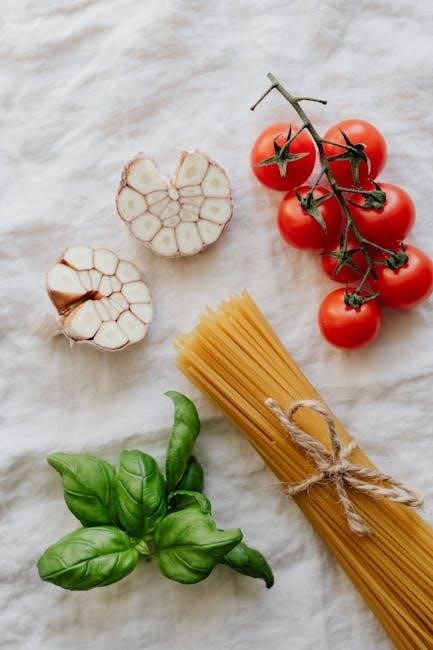
How to Plant Garlic
Plant garlic in well-drained soil and full sun. Break bulbs into cloves, leaving skins on. Plant in autumn or early spring, water during dry periods.
5.1 Preparing Garlic Cloves for Planting
Start by selecting healthy garlic cloves from mature bulbs. Gently break the bulb into individual cloves, ensuring the protective skin remains intact. Avoid damaging the cloves, as this can lead to rot. Choose cloves that are plump and firm, avoiding small or diseased ones. This step ensures healthy growth and maximizes your harvest potential. Proper preparation is crucial for successful garlic planting and long-term storage.
5.2 Proper Spacing and Depth for Garlic Cloves
Plant garlic cloves 4-6 inches apart and 2-4 inches deep, with the pointed tip facing upward. This spacing prevents overcrowding and ensures proper air circulation. Larger cloves may require 8 inches of spacing for optimal growth. The depth allows roots to develop while keeping the clove protected from extreme temperatures. Proper spacing and depth promote healthy bulb formation and maximize yield. Consistent spacing also makes weeding and harvesting easier throughout the growing season.
5.3 Planting in Rows vs. Containers
Garlic can thrive in rows or containers, offering flexibility for gardeners. Planting in rows is ideal for larger spaces, promoting better air circulation and easier access for maintenance. Containers are perfect for small gardens or balconies, allowing control over soil quality and drainage. Ensure containers have drainage holes and are at least 6-8 inches deep. Both methods require full sun and well-drained soil for optimal growth. Choose the method that suits your space and preferences for a successful harvest.

Caring for Garlic Plants
Proper care ensures healthy garlic growth. Water regularly, provide full sun, and fertilize lightly. Mulch retains moisture and suppresses weeds, promoting robust plant development and bulb formation.
6.1 Watering Requirements
Growing garlic requires consistent moisture, especially during bulb formation. Water lightly but regularly, providing about an inch of water per week. Avoid overwatering, as it can lead to rot. Ensure the soil drains well to prevent waterlogged conditions. During dry spells, maintain steady hydration to support healthy growth. Proper watering balances soil moisture, promoting robust plant development and flavorful bulbs. Consistent hydration is key for optimal garlic cultivation and a successful harvest.
6.2 Mulching to Retain Moisture and Suppress Weeds
Mulching is essential for retaining soil moisture and suppressing weeds. Apply a 2- to 3-inch layer of organic mulch like straw, compost, or wood chips around garlic plants. Keep the mulch a few inches away from the base to prevent rot. Replenish as needed during the growing season. Mulching reduces soil evaporation, minimizes weed competition, and regulates soil temperature, creating an ideal environment for healthy garlic growth and development.
6.3 Fertilizing Garlic Plants
Fertilizing garlic plants is crucial for healthy growth. Apply a balanced fertilizer (e.g., 10-10-10 NPK) in early spring when green shoots appear. Avoid over-fertilizing, as it can lead to excessive foliage at the expense of bulb size. Incorporate organic matter like compost or well-rotted manure into the soil before planting to improve fertility. Side-dress with a high-phosphorus fertilizer mid-season to promote bulb formation. Proper nutrition ensures robust growth and a plentiful harvest.
6.4 Managing Weed Growth
Controlling weeds is essential for healthy garlic growth, as weeds compete for nutrients and water. Use mulch to suppress weed growth and retain soil moisture. Hand-weeding is effective, especially when plants are young. Avoid herbicides, as they can damage garlic plants. Regularly inspect and remove weeds, ensuring the soil around garlic remains clear. This promotes better air circulation and prevents disease. A weed-free environment encourages robust growth and maximizes your garlic harvest.
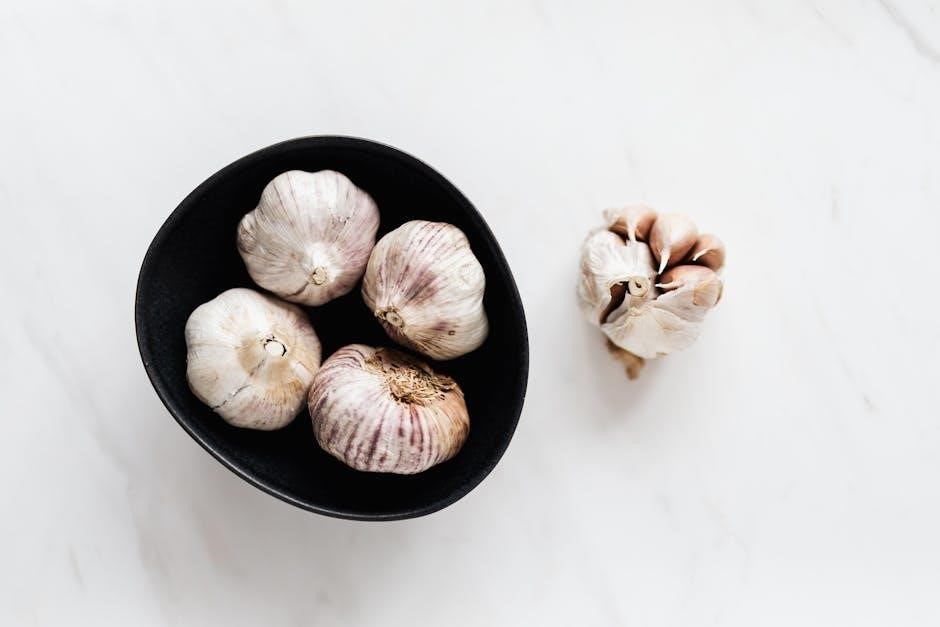
Common Pests and Diseases
Garlic plants are susceptible to pests like aphids and spider mites, as well as diseases such as powdery mildew and root rot, which can harm bulb quality and yield.
7.1 Identifying and Managing Pests
Common garlic pests include aphids, spider mites, and onion thrips. Look for curled leaves, white spots, or actual insects. Introduce natural predators like ladybugs or lacewings to control infestations. Hand-picking pests and using neem oil are effective organic methods. Maintain clean soil and avoid overwatering to prevent pest attraction. Rotate crops annually to break pest life cycles and consider companion planting with repellent herbs like basil or mint for added protection.
7.2 Preventing and Treating Fungal Diseases
Fungal diseases like powdery mildew and root rot can threaten garlic crops. Prevent infection by ensuring good air circulation, avoiding overwatering, and rotating crops annually. Treat mildew with copper-based fungicides and remove infected plants to prevent spread. Improve soil drainage and add organic matter to reduce root rot risks. Regularly inspect plants for signs of disease, and act promptly to protect your harvest and maintain healthy growth throughout the growing season.
7.3 Organic and Chemical Control Methods
Combine organic and chemical methods to effectively manage pests and diseases in garlic crops. Organic options include neem oil, diatomaceous earth, and copper-based fungicides for fungal control. For pests, introduce natural predators or use insecticidal soap. Chemical treatments like pyrethrins or sulfur can be applied as a last resort. Always follow label instructions and rotate methods to avoid resistance. An integrated approach ensures balanced pest control while maintaining soil and plant health for a sustainable garlic harvest.
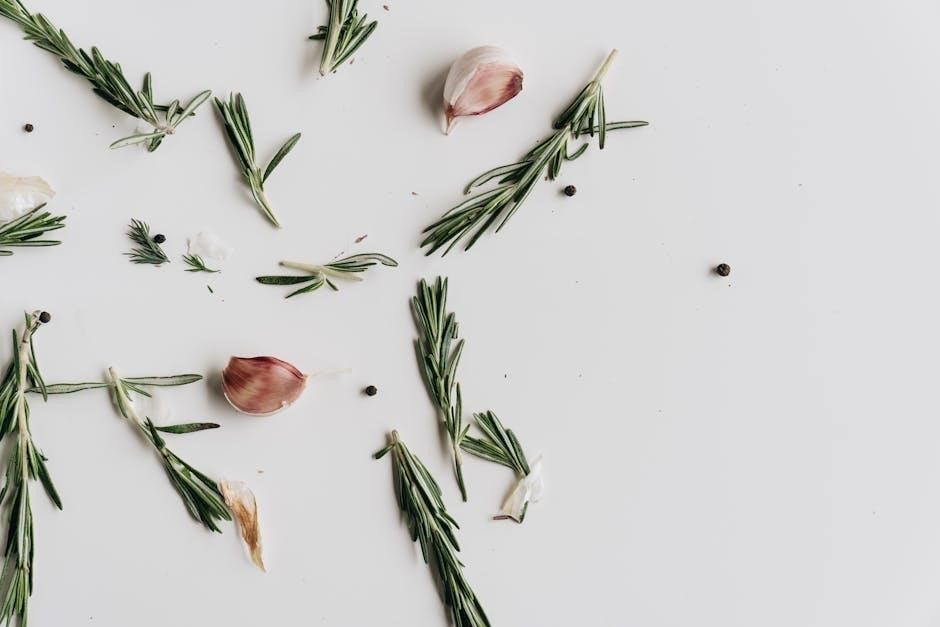
Harvesting Garlic
Garlic is ready to harvest when the tops yellow and fall over, usually in mid-summer. Carefully dig around the bulbs with a fork and lift them with the green tops attached. Allow the garlic to cure in a warm, dry place for proper storage and flavor development.
8.1 Signs of Readiness for Harvest
Garlic is ready to harvest when the green tops begin to yellow and fall over, typically in mid-summer. This signals that the bulbs have reached maturity. Check for yellowing leaves and a slight loosening of the soil around the plants. Gently brush away soil to inspect bulb size; Proper timing ensures optimal flavor and storage quality. Harvest when the necks (where the leaves meet the bulb) start to tighten, indicating the bulb is fully formed.
- The tops will naturally yellow and droop as the plant matures.
- The soil around the bulbs may crack slightly, making it easier to dig.
Harvesting at the right time prevents the bulbs from splitting or deteriorating in the ground.
8.2 Proper Techniques for Digging Garlic
To avoid damaging the bulbs, use a garden fork to carefully loosen the soil around the plants. Insert the fork 6-8 inches away from the stems, gently prying the soil upward. Once loosened, lift the bulbs by hand or with a tool, taking care not to bruise or break them. Brush off excess soil and handle the bulbs gently to preserve their quality for storage and use.
- Loosen soil with a fork to minimize bulb damage.
- Lift bulbs carefully by hand or with a garden tool.
- Brush off soil without applying too much pressure.
8.3 Curing Garlic for Long-Term Storage
Curing garlic is essential for long-term storage. Place bulbs in a warm, dry, dark location with good ventilation. Spread them out to avoid moisture buildup. Allow 2-3 weeks for the outer skin to dry completely. Once cured, store garlic in a cool, dry place or seal it in airtight containers. Proper curing ensures the garlic remains flavorful and fresh for months, preventing spoilage and mold growth.
- Dry garlic in a warm, dark, well-ventilated area.
- Store cured garlic in airtight containers.
- Ensure bulbs are fully dry to prevent mold.

Storing Garlic
Store garlic in a cool, dry, dark place to maintain freshness. Use airtight containers or paper bags to keep humidity low. Avoid refrigerating garlic, as it can sprout or rot.
9.1 Best Conditions for Storing Garlic
The ideal storage conditions for garlic involve a cool, dry, and dark environment. The temperature should range between 32°F and 40°F (0°C to 4°C), with humidity levels kept low to prevent mold. Avoid storing garlic in direct sunlight or warm areas, as this can cause it to dry out or sprout. Use breathable containers like paper bags or mesh bags to maintain airflow and preserve freshness for several months.
9.2 Methods for Preserving Garlic
Preserving garlic can be done through various methods to extend its shelf life. Freezing is effective, as whole cloves or minced garlic can be stored in airtight containers. Pickling involves soaking cloves in vinegar, creating a tangy flavor. Dehydrating garlic into powder or flakes is another option, retaining its aroma and flavor. Additionally, garlic can be preserved in oil, though proper sealing is essential to prevent spoilage. Each method ensures garlic remains fresh and ready for culinary use year-round.
9.3 Tips for Maintaining Garlic Freshness
To keep garlic fresh, store it in a cool, dry place with good ventilation. Avoid refrigeration, as moisture can cause mold. Whole bulbs last longer than separated cloves. Use paper bags or breathable containers to maintain airflow. For extended storage, curing garlic after harvest is crucial. Check regularly for signs of spoilage and remove any damaged cloves. Proper storage ensures garlic remains flavorful and aromatic for months, ready for use in various dishes throughout the year.
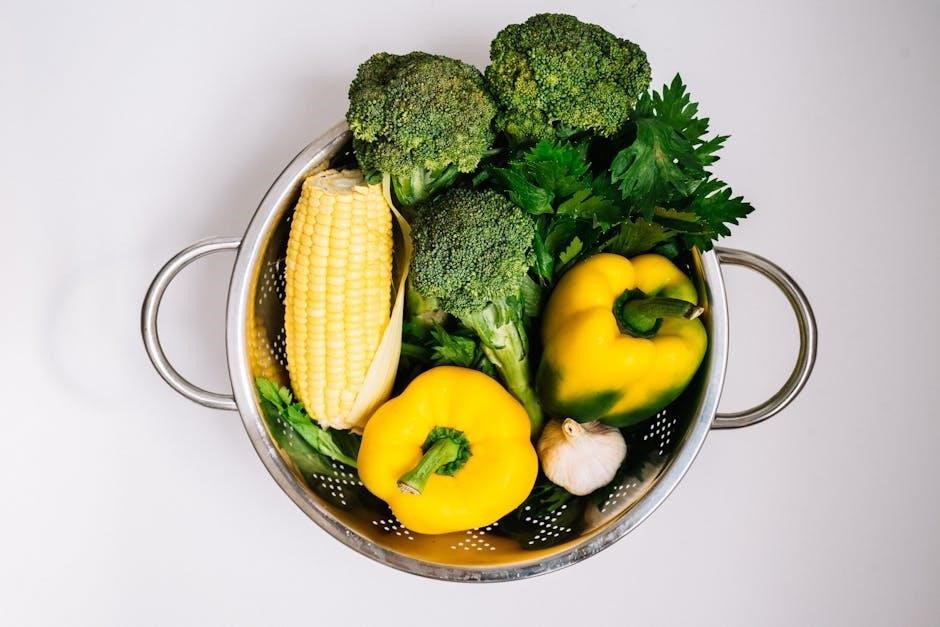
Troubleshooting Common Issues
Identify and address problems promptly to ensure a healthy garlic crop. Common issues include pests, diseases, and nutrient deficiencies. Regular monitoring and timely solutions prevent significant damage and ensure a successful harvest.
10.1 Dealing with Poor Growth
Poor garlic growth can result from inadequate sunlight, nutrient-deficient soil, or improper watering. Ensure plants receive full sun and maintain well-drained, fertile soil. Check for pests and diseases, and adjust watering schedules. Fertilize with balanced nutrients, and mulch to retain moisture. Addressing these issues early can revitalize your crop and improve yields. Regular monitoring and timely adjustments are key to overcoming growth challenges and achieving a healthy harvest.
10.2 Addressing Pest or Disease Damage
Inspect garlic plants regularly for signs of pests like aphids, mites, or fungal diseases. Use neem oil or insecticidal soap to control pests, and treat fungal infections with copper-based fungicides. Remove and dispose of heavily damaged or infected plants to prevent spread. For severe infestations, apply chemical pesticides as a last resort. Practice crop rotation and maintain clean, well-drained soil to reduce the risk of recurring issues. Early intervention is crucial to protect your garlic crop and ensure a healthy harvest.
10.3 Correcting Soil or Watering Problems
If your garlic plants show signs of poor growth due to soil or watering issues, act promptly. Test the soil pH and adjust if necessary, as garlic prefers a pH of 6.0-7.0. Avoid waterlogging by ensuring good drainage and reducing watering frequency during rainy periods. Add organic matter like compost to improve soil fertility and structure. Mulch around plants to retain moisture without causing waterlogging. Correcting these issues early ensures healthy growth and a successful harvest. Regular soil checks and balanced watering are key to preventing future problems.
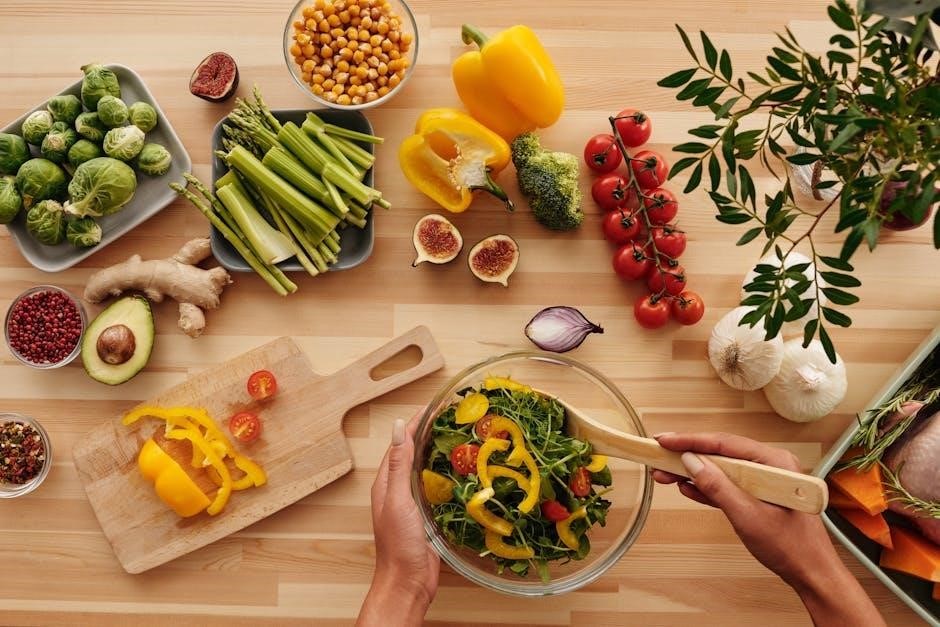
Additional Tips for Successful Garlic Planting
Incorporate crop rotation, maintain detailed planting records, and consider sharing or selling your harvest. These strategies enhance productivity and ensure a bountiful garlic yield season after season.
11.1 Rotating Garlic Crops
Rotating garlic crops prevents soil depletion and reduces pest buildup. Plant garlic in a different bed each season, avoiding areas where Alliums or solanaceous plants grew. This practice enhances soil fertility and minimizes disease risks, promoting healthy growth and higher yields. Proper rotation ensures garlic thrives without exhausting the soil’s nutrients, maintaining long-term garden health and productivity.
11.2 Keeping Records for Better Results
Keeping detailed records improves garlic planting outcomes by tracking progress and refining techniques. Document planting dates, weather patterns, soil conditions, and pest occurrences. Note which varieties perform best and yield highest. This data helps identify optimal practices, ensuring consistent success. Over time, records reveal patterns, allowing adjustments for better growth and harvests, making future planting decisions more informed and effective.
11.3 Sharing or Selling Your Harvest
Sharing or selling your garlic harvest can be a fulfilling way to connect with others. Offer fresh bulbs to friends or at local markets. Consider value-added products like braided garlic or flavored oils. Proper curing and presentation enhance appeal. Selling garlic can provide income, while sharing fosters community connections. Use this opportunity to educate others about garlic’s benefits and your growing methods, turning your harvest into a meaningful exchange or profitable venture.
Growing garlic is simple and rewarding. Proper planting and care lead to a successful harvest. Enjoy fresh, flavorful garlic and share your bounty with others.
12.1 Summary of Key Points
Growing garlic is straightforward with proper planning. Choose the right variety, prepare well-drained soil, and plant at the optimal time for your climate. Fall planting is ideal in cooler regions, while spring planting suits warmer areas. Ensure adequate sunlight, water consistently, and mulch to retain moisture. Harvest when foliage yellows, and cure bulbs for storage. With attention to detail, you’ll enjoy a successful garlic harvest and fresh, flavorful results for culinary use.
12.2 Encouragement for First-Time Growers
Growing garlic is a simple and rewarding process, even for beginners. Start with a few cloves, choose a sunny spot, and follow basic care tips. Garlic is hardy and forgiving, making it perfect for first-time gardeners. Don’t worry if things don’t go perfectly—every harvest is a learning opportunity. With minimal effort, you’ll enjoy fresh, flavorful garlic and the satisfaction of nurturing your own crop. Give it a try and discover the joy of homegrown garlic!
12.3 Final Thoughts on Garlic Planting
Growing garlic is a simple yet rewarding journey that connects you with nature and provides fresh, flavorful results. With proper preparation and care, even first-time growers can achieve success. Remember, garlic is a hardy crop that thrives with minimal effort. Enjoy the process, learn from each harvest, and experiment with new varieties to enhance your gardening experience. Happy planting, and savor the joy of your homegrown garlic!

